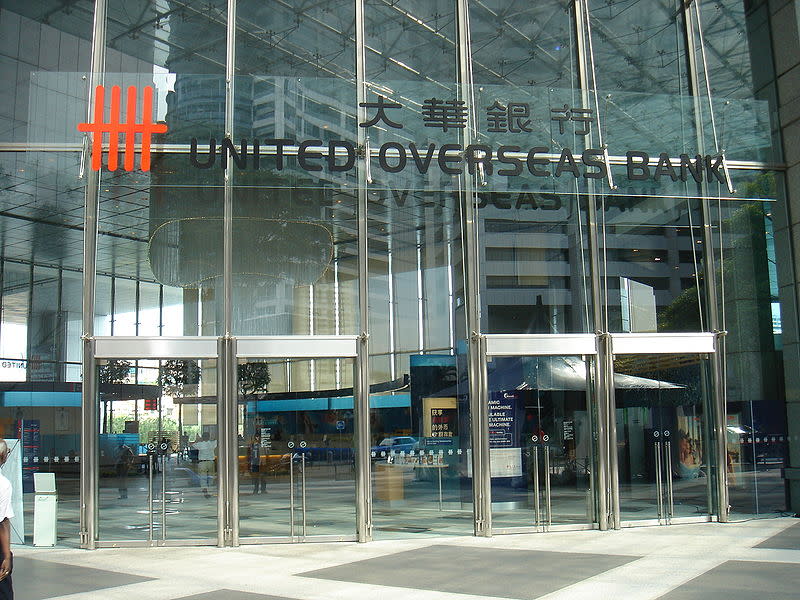Here’s How Much You’d End Up with If You Had Invested S$20,000 in UOB a Decade Ago

It never fails to amaze me how much wealth we can generate by investing over the long term.
Many investors fail to appreciate the power of compounding over long periods.
That’s why it’s useful to step back and illustrate this concept with an example.
Why is this important, you may ask?
Because compounding can allow you to not just build wealth for your retirement, but also generates a stream of passive income through dividends that sustain you through your golden years.
Last year, we conducted such a thought experiment with Singapore’s largest bank, DBS Group (SGX: D05).
We showed that S$10,000 invested in a reputable bank would have garnered you S$25,688 in a decade.
Now, let’s repeat the same exercise with United Overseas Bank Ltd (SGX: U11), or UOB, to illustrate the same principle.
An impressive total return
Imagine if you had invested S$20,000 of your money in UOB back in November 2012.
The share price of the bank back then was S$18.72.
Fast forward to the present, and UOB’s share price has shot up close to 62% to close at S$30.25.
Your S$20,000 would have grown to S$32,318, a tidy sum indeed.
But hold on, let’s not forget the twice-yearly dividends that UOB has declared every year since 2012.
10 years’ worth of dividends amounts to S$9.68 per share, resulting in total dividends received of S$10,342.
Hence, you will end up with a total of S$42,660, comprising S$32,318 worth of UOB shares and S$10,342 of dividends.
Your total return will be an impressive 113.3%, split into 61.6% of capital gains and 51.7% of dividends.
The 10-year compound annual growth rate, or CAGR, stands at a healthy 7.9%, handily beating the average inflation rate of just 1.1%.
Not a shabby return, considering your money is parked with a reputable bank with a stellar track record of surviving through good times and bad.
Improvement in total income, net profit and dividends
How did UOB’s share price pull off such an impressive performance?
It all boils down to how the bank has managed to grow both its top and bottom lines during the last 10 years.
Back in 2012, UOB’s total income and net profit stood at S$6.5 billion and S$2.8 billion, respectively.
Fast forward to 2021, and the lender’s total income and net profit have climbed to S$9.8 billion and S$4 billion, respectively.
The increase represents a nine-year CAGR of 4.7% for total income and a 4% CAGR for net profit.
What’s more impressive is UOB’s dividend growth rate, which has averaged a 6.2% per annum increase from 2012 to 2021.
Great potential for further growth
These past returns are indeed eye-catching.
However, cynics may argue that past performance is not reflective of the future.
There’s good news, though.
UOB has demonstrated its ability to continue posting strong results and has displayed robust growth in its latest fiscal 2022’s third quarter (3Q2022) earnings.
A record net profit of S$1.4 billion was chalked up by the bank for 3Q2022 as its net interest margin soared to 1.95% from 1.55% a year ago.
Rising interest rates are acting as a tailwind for the group’s business and are helping to lift its net interest income.
The net interest margin for the fourth quarter is projected to rise above 2%.
Elsewhere, UOB has also confirmed that its recent acquisition of Citigroup’s (NYSE: C) consumer banking business has been completed in both Thailand and Malaysia.
The remaining two countries, Vietnam and Indonesia, should be completed by the end of next year.
This acquisition looks set to further boost UOB’s franchise in these four countries, helping it to garner a larger customer base and improving its operating and financial metrics.
Get Smart: The power of long-term investing
Investing in the right company can produce wonderful returns.
UOB is one such stock that has rewarded shareholders handsomely over the past decade.
The great news is that it’s not too late to park some money in the bank’s shares.
Tailwinds such as higher interest rates, coupled with UOB’s recent acquisition, should see the bank continue to post healthy total income and net profit growth.
Investors may also be in for a treat should the bank raise its final dividend for 2022 in line with its better results.
By holding UOB shares over the next decade, you stand to enjoy both capital gains and rising dividends, barring unforeseen circumstances.
Disclaimer: Royston Yang owns shares of DBS Group.
The post Here’s How Much You’d End Up with If You Had Invested S$20,000 in UOB a Decade Ago appeared first on The Smart Investor.


